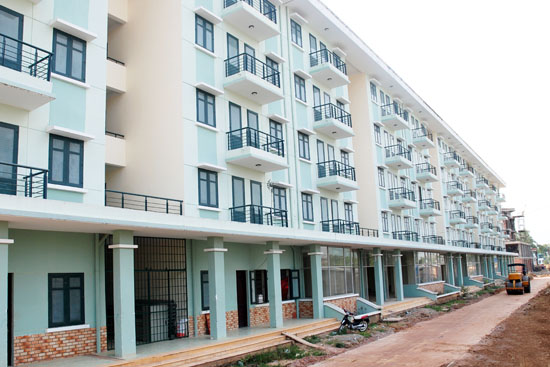The Ministry of Finance issues Circular 99/2016/TT-BTC (Circular 99) providing guidance on the management of value-added tax (VAT) refunds. Notably, the circular includes several regulations on tax refund expenditure; risk management and tax refund management for certain high-risk tax cases; the responsibilities of Tax Authorities in handling dossiers, among other significant provisions.
More Specific Regulations on VAT Refund Funding
Circular 150/2013/TT-BTC on guidelines for preparation, management, and implementation of VAT refunds from the VAT Refund Fund stipulates that the VAT refund estimate is assigned for the Director of the Tax Department to manage and refund taxes within the scope of the estimate.
However, according to current regulations in Circular 99, VAT refund funding is allocated in the annual state budget estimate decided by the National Assembly and managed by the Director General of the General Department of Taxation, who executes the VAT refund within the allocated budget estimate. The Director of the Tax Department manages, uses VAT refund funds to refund taxpayers according to authority, and is responsible for issuing refund decisions in accordance with the law.

Clarifying Risk Management Principles in VAT Refund Management
Circular 99 highlights that the risk assessment in VAT refund management is implemented according to the provisions of Clause 1 Article 1 of the Law on Tax Administration 21/2012/QH13; Circular 204/2015/TT-BTC.
Risk management activities in VAT refund management are prescribed as follows:
- Classification of refund application dossiers, including: prior refund, post-inspection dossiers, and prior-inspection, post-refund dossiers according to Clause 1 Article 1 of the Law on Tax Administration 21/2012/QH13, Clause 3 Article 1 of Law No. 106/2016/QH13; Tax authorities conduct prior inspections and post-refund inspections for high-risk refund applications.- Develop post-refund inspection and audit plans according to Clause 18 Article 1 of the Law on Tax Administration 21/2012/QH13, Clause 4 Article 41 of Decree 83/2013/ND-CP: post-refund inspections are conducted based on risk management principles within ten years from the date of the refund decision.
Official Dispatch 3593/TCT-KK concerning the implementation and introduction of new contents of Circular 99 evaluates that Circular 204/2015/TT-BTC has taken effect but lacks specific regulations for implementation. Now, Law No. 106/2016/QH13 provides higher and more specific legal validity for applying risk management in VAT refunds under the Law on Tax Administration 21/2012/QH13.
Additional Guidelines on Professional Measures in VAT Refund Management for High Tax Risk Cases
Previously, the contents related to professional VAT refund management were implemented according to the guidelines in the Official Dispatch of the Ministry of Finance.
Circular 99 provides the following guidelines:
- In cases where inspections and audits uncover that the taxpayer purchased goods and services from another taxpayer (goods and services supplier) involved in tax evasion or fraud, the tax authority must add the supplier to the inspection or audit plan, or request the tax authority directly managing the supplier to add them to the plan and conduct inspections, audits, or provide information on the supplier’s tax compliance to support the VAT refund process.- If the taxpayer has payment transactions involving organizations or individuals with suspicious transactions according to the warning list of banking inspection and supervision authorities or if inspections and audits reveal that the taxpayer has incomplete or unsatisfactory bank payment documentation, the tax authority can request related agencies or organizations to provide information to support the VAT refund process.- If inspections and audits reveal signs of tax evasion or fraud according to tax laws and possible criminal offenses, the tax authority will transfer the case to the police in accordance with the Criminal Procedure Code.
Determining the Authority to Receive and Resolve VAT Refund Applications
Circular 99 explicitly stipulates the authority to receive and resolve VAT refund applications, including two decentralized models, specifically:
- For the 4 provinces and cities (Hanoi, Ho Chi Minh City, Binh Duong, Dong Nai):- The tax authority directly managing the taxpayer (Tax Department, Tax Branch) performs the classification of refund applications, determines the refundable VAT amount of the taxpayer, identifies tax debt, fines, and late payment interest to be offset against the refundable VAT amount, and proposes the refundable amount. The Tax Branch, after completing these tasks, forwards the dossier to the Tax Department.- The Tax Department appraises the refund application, issues the refund decision, and processes the refund for the taxpayer.- For the remaining 59 provinces and cities: The Tax Department is responsible for receiving and resolving tax refund applications from taxpayers, including those directly managed by the Tax Branch.

 Article table of contents
Article table of contents





.Medium.png)
.Medium.png)
.Medium.png)
.Medium.png)
